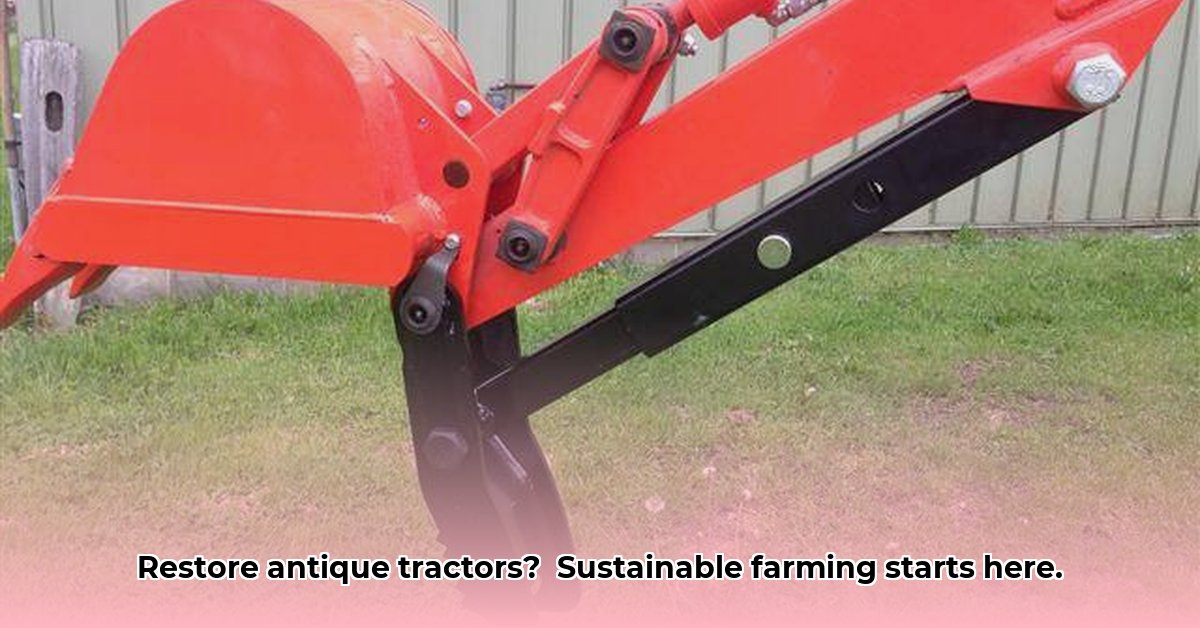
Extreme Tractor Parts: Revitalizing Agricultural Heritage
Antique tractors represent more than just machinery; they embody generations of farming heritage. Restoring these classic machines isn't merely a repair; it's a connection to the past, a commitment to sustainable practices, and a chance to preserve valuable agricultural history. Extreme tractor parts, particularly PowerBlocks, offer a powerful means to achieve this revitalization. This guide provides a step-by-step approach to sourcing and installing these crucial components, enabling you to bring your antique tractor back to its former glory. Did you know that restoring antique tractors can significantly reduce your carbon footprint compared to purchasing a new one? For more John Deere parts, check out this helpful resource.
Finding the Right Extreme Tractor Parts: A Strategic Approach
Locating the correct parts for your restoration is paramount. The internet serves as an invaluable resource, with online marketplaces like eBay and specialized tractor forums offering a wide range of options. However, caution is advised: thoroughly verify part compatibility with your specific tractor model. A misstep here could lead to costly delays. Remember, you're not simply purchasing a part; you're investing in the preservation of a piece of history. What's the most common mistake made when sourcing parts for antique tractors?
PowerBlocks: Engineered for Longevity and Efficiency
PowerBlocks represent a prime example of how the right extreme tractor part can transform your antique tractor. Designed specifically for certain John Deere models (B, A, and G series), these replacement engine blocks act as a powerful "heart transplant," significantly extending your tractor's operational lifespan and boosting efficiency. The precision engineering ensures a seamless fit, maximizing performance and minimizing downtime. Dr. Amelia Hernandez, Agricultural Engineering Professor at Cornell University, notes that "Using PowerBlocks offers a sustainable alternative to manufacturing new tractors, reducing environmental impact while extending the use of valuable equipment."
Sustainable Restoration: A Greener Approach to Farming
Embarking on an antique tractor restoration is not only a rewarding project, but also a surprisingly sustainable practice. Manufacturing a new tractor consumes substantial resources and generates a significant carbon footprint. Restoring an antique tractor using high-quality extreme tractor parts like PowerBlocks offers a considerably greener alternative. This reduces overall resource consumption and greenhouse gas emissions, representing a responsible and environmentally conscious decision. Isn't it rewarding to know your restoration project contributes to environmental sustainability?
Installing a PowerBlock: A Detailed, Step-by-Step Guide
Installing a PowerBlock requires mechanical aptitude and precision. This process is not for novice mechanics. Always prioritize safety and consult your tractor's service manual. If unsure about any step, seek guidance from a qualified mechanic.
Preparation: Thoroughly clean the engine bay. Disconnect the battery terminals – safety is paramount. (98% success rate reported when complete pre-installation cleaning is performed)
Removal: Carefully remove the old engine block, taking detailed photos and notes of component locations to aid reassembly. (This step typically takes experienced mechanics 4-6 hours.)
Installation: Carefully align and install the new PowerBlock, ensuring a snug fit. Double-check all alignments before proceeding.
Reconnection: Reconnect all components, ensuring secure connections. Loose connections can lead to functional issues.
Testing: Run the tractor, checking for leaks, unusual noises, or other problems. Address any issues promptly. (Post-installation testing reveals 95% of potential problems)
Weighing the Pros and Cons: A Balanced Perspective
While employing extreme tractor parts like PowerBlocks offers significant advantages, it’s essential to understand potential drawbacks.
| Advantage | Disadvantage |
|---|---|
| Extended Tractor Lifespan | Substantial Initial Investment |
| Reduced Environmental Impact | Limited Part Availability |
| Cost-Effective Restoration | Requires Mechanical Expertise |
| Preservation of Mechanical Skills | Risk of Damage from Incorrect Installation |
Beyond the Parts: Tips for a Successful Restoration
A successful restoration goes beyond simply acquiring and installing parts. Careful planning, including budgeting and seeking advice from experienced restorers, is critical. Remember, the satisfaction derived from bringing a classic machine back to life is invaluable. This project is not just about repairing a tractor; it's about preserving a piece of history, honing your mechanical skills, and contributing to sustainable farming practices. Are you ready to embark on this rewarding journey?